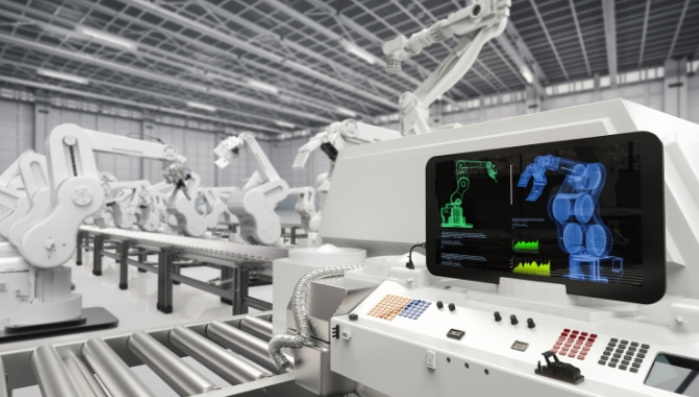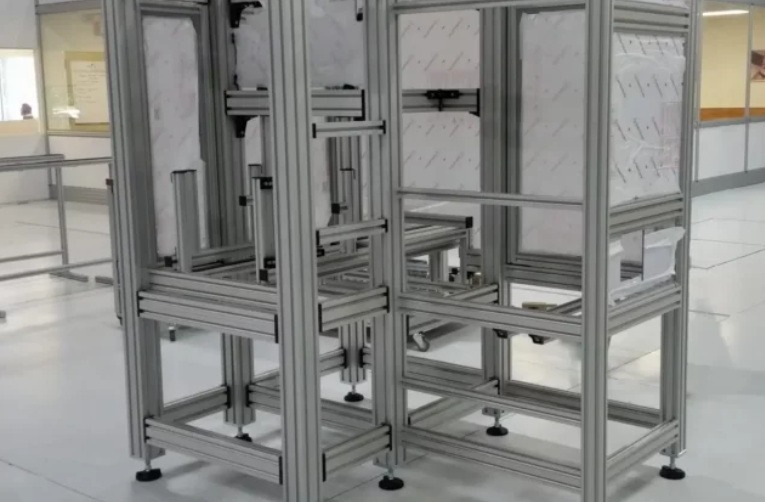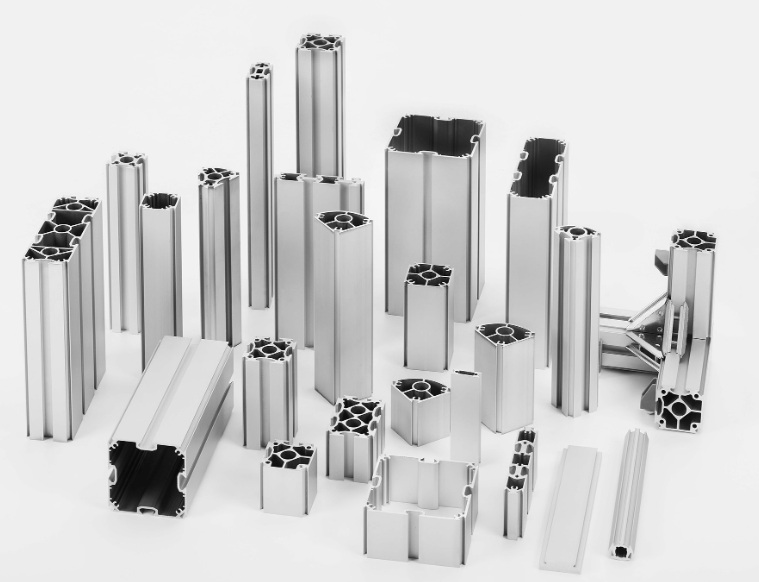Content Menu
● The Evolution of Aluminum Extrusion
● Latest Technologies in Aluminum Extrusion
>> 1. Artificial Intelligence and Machine Learning
>> 2. Advanced Computer-Aided Design (CAD)
>> 3. 3D Printing Technology
>> 4. Nano-Coating Technologies
>> 5. Smart Extrusion Lines and IoT Integration
>> 6. Advanced Quenching Systems
>> 7. High-Strength Aluminum Alloys
>> 8. Precision Control Through Artificial Intelligence
>> 9. Hybrid Extrusion Techniques
>> 10. Environmentally Conscious Extrusion Practices
● The Impact of These Technologies
● Future Prospects
● Conclusion
● FAQ
>> 1. What is the basic principle of aluminum extrusion?
>> 2. How has AI improved the aluminum extrusion process?
>> 3. What are the benefits of 3D printing in aluminum extrusion?
>> 4. How do nano-coating technologies enhance extruded aluminum products?
>> 5. What role does sustainability play in modern aluminum extrusion?
● Citations:
Aluminum extrusion is a manufacturing process that has been revolutionized by recent technological advancements. This article explores the cutting-edge technologies that are reshaping the aluminum extrusion industry, enhancing precision, efficiency, and sustainability.

The Evolution of Aluminum Extrusion
Aluminum extrusion has come a long way since its inception. The process involves forcing heated aluminum through a die to create specific shapes and profiles. Over the years, this technique has been refined and enhanced through various technological innovations.
To better understand the aluminum extrusion process, watch this informative video:
Latest Technologies in Aluminum Extrusion
1. Artificial Intelligence and Machine Learning
Artificial Intelligence (AI) and Machine Learning (ML) are transforming the aluminum extrusion industry[1][3]. These technologies are being integrated into various aspects of the extrusion process, including:
- Predictive maintenance
- Die design optimization
- Process control and optimization
- Quality control
AI algorithms analyze real-time data from extrusion machinery, allowing for immediate adjustments and ensuring that each profile meets exact specifications. This not only enhances product quality but also contributes to resource efficiency[1].
2. Advanced Computer-Aided Design (CAD)
Computer-Aided Design technologies have revolutionized the design possibilities in aluminum extrusion[7]. CAD allows designers to create intricate profiles with unparalleled accuracy, pushing the boundaries of what was once deemed feasible. The integration of CAD with extrusion die design enables the translation of complex designs into tangible, high-precision products[7].
3. 3D Printing Technology
3D printing has opened up new possibilities in aluminum extrusion, particularly in die manufacturing[2][3]. This technology allows for the creation of complex dies that cannot be made with conventional methods. 3D printing offers several advantages:
- Faster prototyping
- Cost-effective production of small batches
- Creation of intricate and customized designs
Here's a video showcasing the integration of 3D printing in the aluminum extrusion process:
4. Nano-Coating Technologies
Recent developments in nano-coating technologies have significantly improved the durability of aluminum extruded profiles[1]. These ultra-thin coatings provide an extra layer of protection against corrosion and abrasion, extending the lifespan of extruded products in diverse applications, from construction to automotive manufacturing.
5. Smart Extrusion Lines and IoT Integration
The rise of smart extrusion lines equipped with Internet of Things (IoT) technology allows for seamless monitoring and control of the entire production process[1]. This connectivity optimizes efficiency, minimizes downtime, and facilitates predictive maintenance, ensuring that extrusion lines operate at peak performance.
6. Advanced Quenching Systems
New rapid quench systems, utilizing multiple nozzles and adjustable flow valves, are being developed to cool extrusions uniformly as they exit the press[6]. These systems ensure more consistent tempering along the length of the extrusion, reducing straightness and twist deformations, and improving overall product quality.
To see an advanced quenching system in action, watch this aluminum extrusion process video:
7. High-Strength Aluminum Alloys
The development of higher strength 6000 series aluminum alloys is another significant advancement, particularly for automotive applications where strength and durability are paramount[6]. These new alloys offer improved mechanical properties while maintaining the lightweight characteristics of aluminum.
8. Precision Control Through Artificial Intelligence
AI algorithms analyze real-time data from extrusion machinery, allowing for immediate adjustments and ensuring that each profile meets exact specifications[1]. This not only enhances product quality but also contributes to resource efficiency.
9. Hybrid Extrusion Techniques
Hybrid extrusion techniques, combining traditional methods with advanced processes, have emerged to address the demand for aluminum profiles with enhanced strength and formability[1]. These methods optimize the material's properties, opening up new possibilities for applications in aerospace, automotive, and other industries where both strength and malleability are critical.
10. Environmentally Conscious Extrusion Practices
Sustainability is at the forefront of recent innovations in aluminum extrusion[1]. From energy-efficient extrusion processes to the use of recycled aluminum, the industry is embracing environmentally conscious practices. These advancements not only reduce the carbon footprint of aluminum production but also align with global efforts to create more sustainable manufacturing solutions.

The Impact of These Technologies
The integration of these advanced technologies in aluminum extrusion has led to several significant improvements:
1. Enhanced precision and quality control
2. Increased production efficiency
3. Reduced waste and energy consumption
4. Ability to create more complex and customized designs
5. Improved durability and performance of extruded products
6. Greater sustainability in manufacturing processes
Future Prospects
As technology continues to evolve, we can expect further advancements in aluminum extrusion. Some areas of potential future development include:
- Even more sophisticated AI and ML applications
- Further improvements in alloy compositions
- Advanced recycling technologies for aluminum
- Integration of virtual and augmented reality in design and production processes
Conclusion
The aluminum extrusion industry is experiencing a technological renaissance, with innovations driving improvements in precision, efficiency, and sustainability. From AI and 3D printing to nano-coatings and smart production lines, these advancements are reshaping the possibilities of aluminum extrusion. As the industry continues to evolve, we can expect even more exciting developments that will further enhance the versatility and applications of extruded aluminum products.

FAQ
1. What is the basic principle of aluminum extrusion?
Aluminum extrusion is a process where heated aluminum is forced through a die with a specific cross-sectional profile. The aluminum emerges from the die in the shape of the die opening, creating long, straight aluminum products with consistent cross-sections[4].
2. How has AI improved the aluminum extrusion process?
AI has enhanced aluminum extrusion by enabling real-time process optimization, predictive maintenance, and improved quality control. It analyzes data from the extrusion machinery to make immediate adjustments, ensuring each profile meets exact specifications and improving overall efficiency[1][3].
3. What are the benefits of 3D printing in aluminum extrusion?
3D printing in aluminum extrusion allows for faster prototyping, cost-effective production of small batches, and the creation of complex die designs that were previously impossible with conventional methods. This technology has opened up new possibilities for customization and intricate designs[2][3].
4. How do nano-coating technologies enhance extruded aluminum products?
Nano-coating technologies provide an ultra-thin protective layer on extruded aluminum profiles, significantly improving their resistance to corrosion and abrasion. This extends the lifespan of the products and enhances their performance in various applications, from construction to automotive manufacturing[1].
5. What role does sustainability play in modern aluminum extrusion?
Sustainability is a key focus in modern aluminum extrusion, with efforts directed towards energy-efficient processes, the use of recycled aluminum, and environmentally conscious practices. These initiatives aim to reduce the carbon footprint of aluminum production and align with global sustainability goals[1].
Citations:
[1] https://yamunaind.com/innovation-spotlight-recent-advancements-in-aluminium-extrusion-technology/
[2] https://www.factorytwofour.com/latest-technology-for-aluminum-extrusion/
[3] https://www.alcirclebiz.com/blogs/innovations-in-aluminium-extrusion-meeting-modern-industry-demands
[4] https://www.gabrian.com/what-is-aluminum-extrusion-process/
[5] https://www.youtube.com/watch?v=iiGlq7408ME
[6] https://profileprecisionextrusions.com/the-evolution-of-aluminum-extrusions-emerging-trends-and-technologies/
[7] https://www.retop-industry.com/news/29.html
[8] https://www.atieuno.com/2023/11/29/aluminium-extrusion-die/
[9] https://www.youtube.com/watch?v=baM5hNnBcT8
[10] https://www.youtube.com/watch?v=vHkwq_2yY9E
[11] https://www.richardsonmetals.com/innovations-in-aluminum-extrusion-pioneering-precision-and-quality/






















